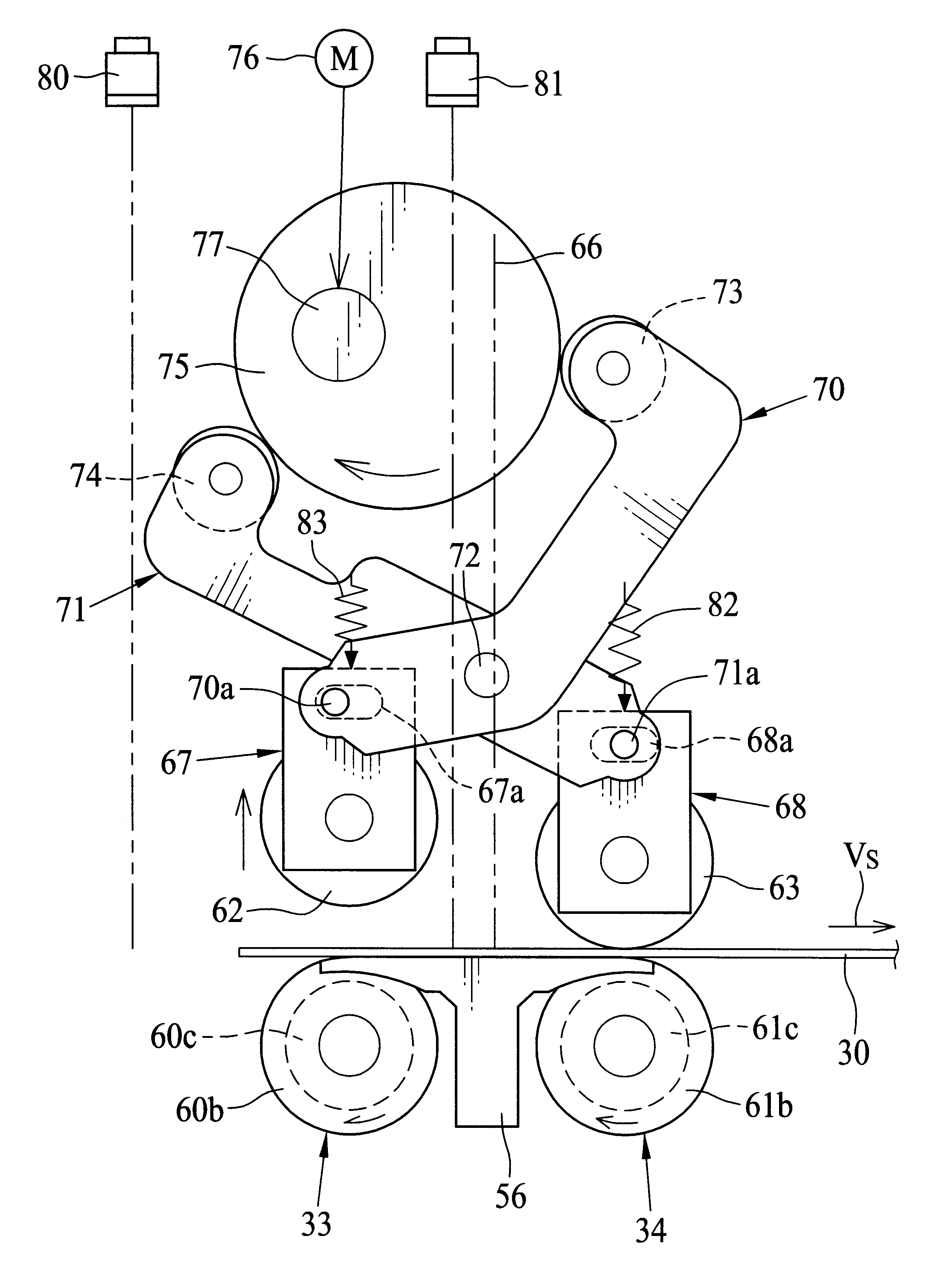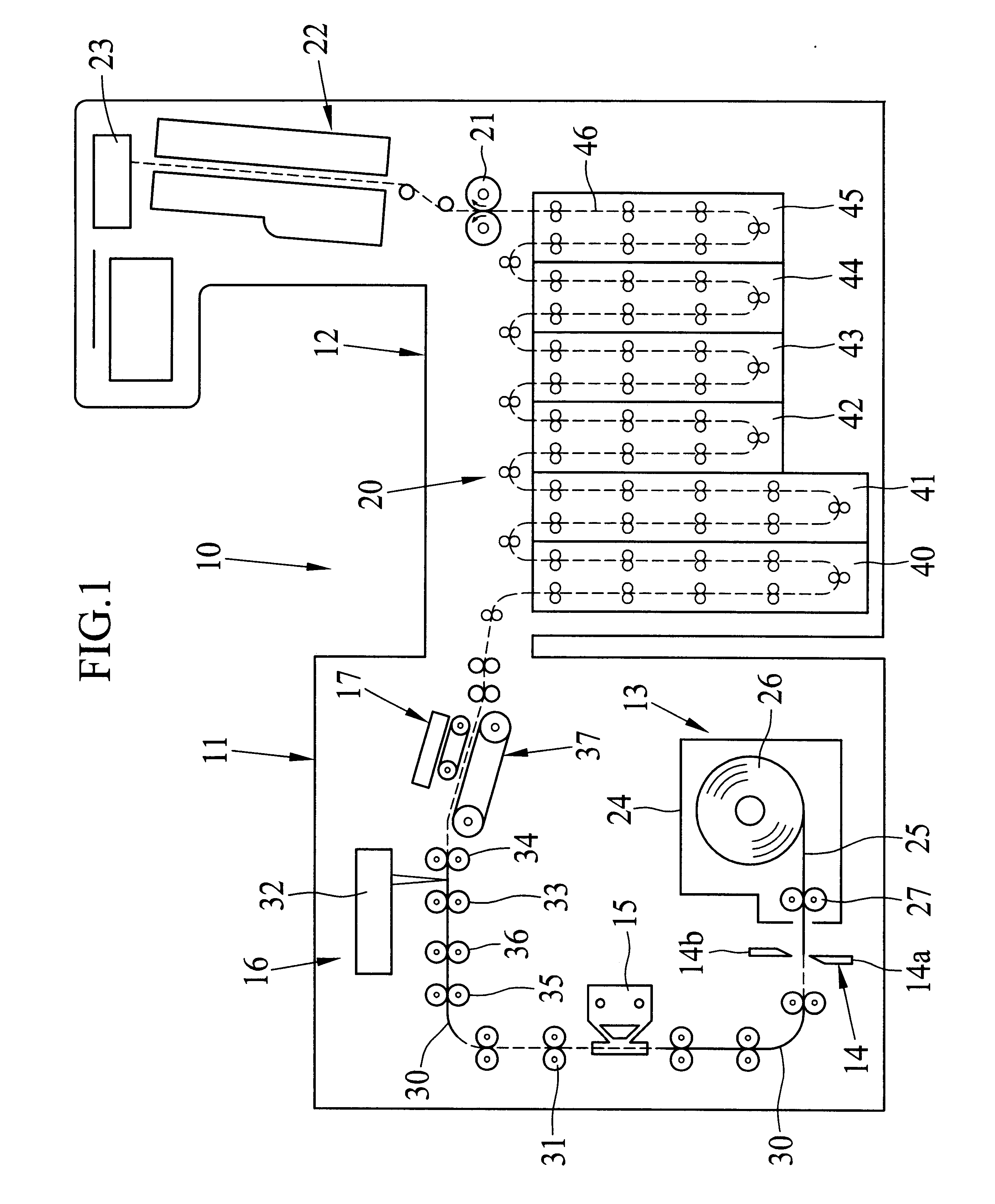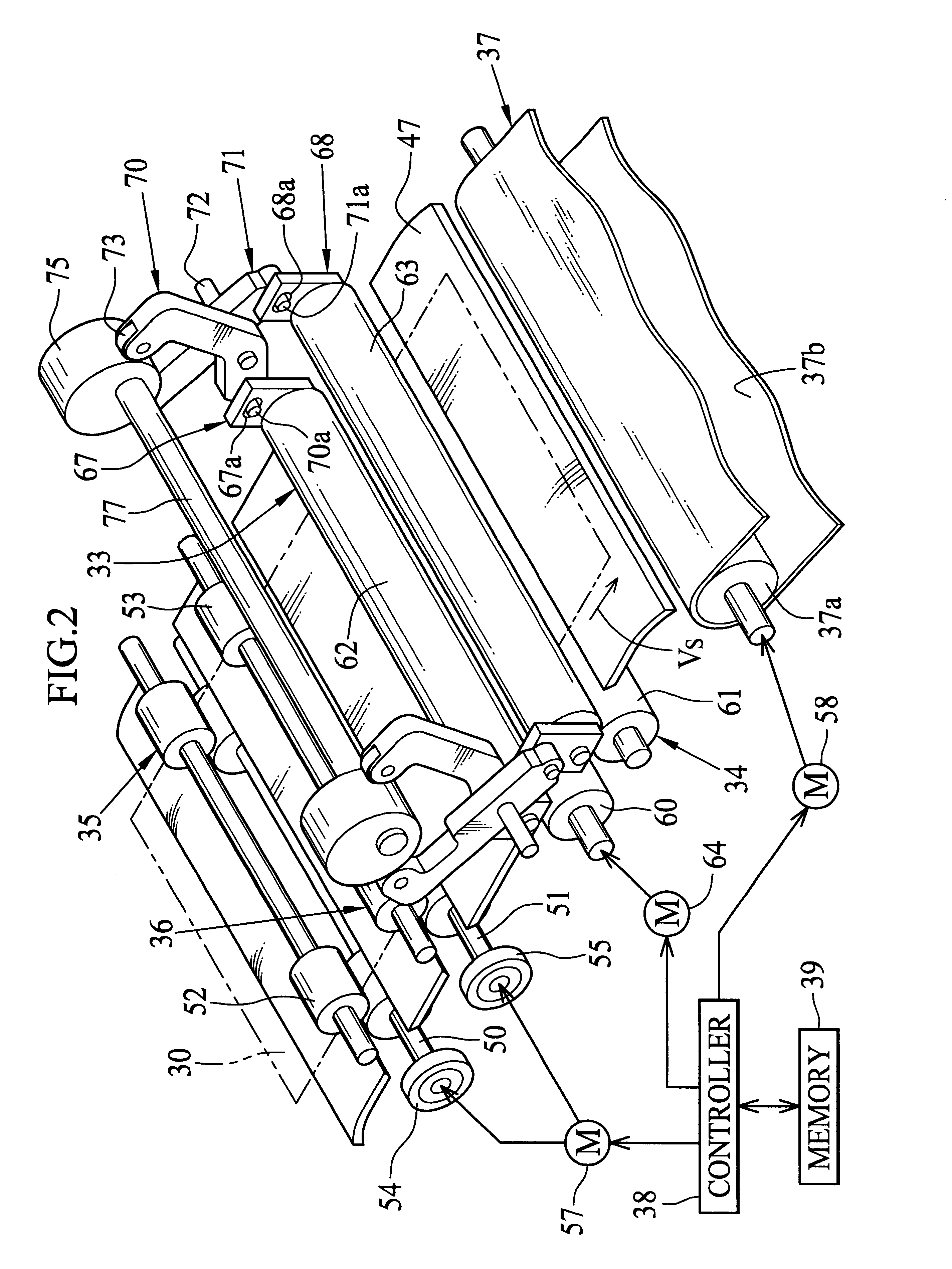Recording sheet feeding device
a technology of feeding device and recording sheet, which is applied in the direction of thin material processing, article separation, article delivery, etc., can solve the problems of density unevenness in the recording sheet, deviation in the exposed position, and possibility of density unevenness in the print imag
- Summary
- Abstract
- Description
- Claims
- Application Information
AI Technical Summary
Benefits of technology
Problems solved by technology
Method used
Image
Examples
Embodiment Construction
In FIG. 1, a printer processor 10 is comprised of a printer section 11 and a processor section 12, which are connected to each other. The printer section 11 includes a paper loader 13, a paper cutter 14, a rear side printer 15, an exposure unit 16 and a sheet sorter 17. The processor section 12 includes a development / fixation device 20, a squeeze roller pair 21, a drier 22 and a sheet collection unit 23.
A paper magazine 24 is loaded in the paper loader 13, and includes a photosensitive recording paper 25, which is wound into a paper roll 26. For instance, the photosensitive paper is formed by coating a mixture of a white pigment and a resin including a polyester, on an emulsion-coated surface (recording surface) of a base sheet. The paper magazine 24 is provided with a feeding roller pair 27, which is driven by a feeding motor (not shown). When the feeding roller set 27 rotates, the photosensitive recording paper 25 is drawn from the paper roll 26, and fed to the rear side printer 1...
PUM
 Login to View More
Login to View More Abstract
Description
Claims
Application Information
 Login to View More
Login to View More - R&D
- Intellectual Property
- Life Sciences
- Materials
- Tech Scout
- Unparalleled Data Quality
- Higher Quality Content
- 60% Fewer Hallucinations
Browse by: Latest US Patents, China's latest patents, Technical Efficacy Thesaurus, Application Domain, Technology Topic, Popular Technical Reports.
© 2025 PatSnap. All rights reserved.Legal|Privacy policy|Modern Slavery Act Transparency Statement|Sitemap|About US| Contact US: help@patsnap.com



